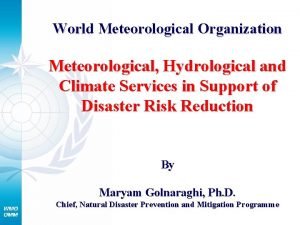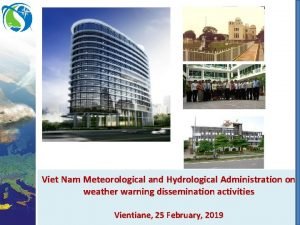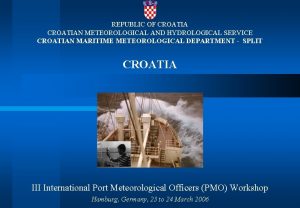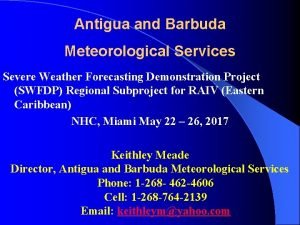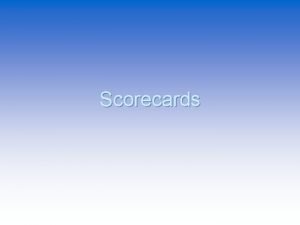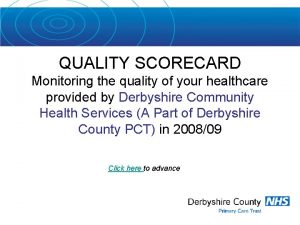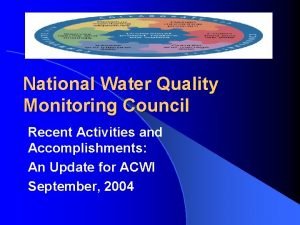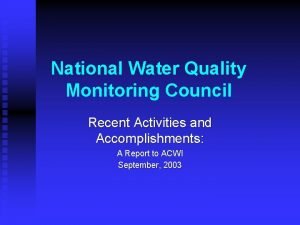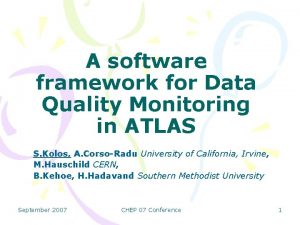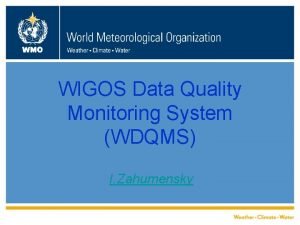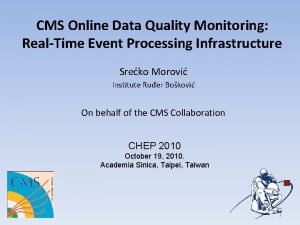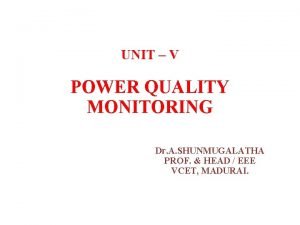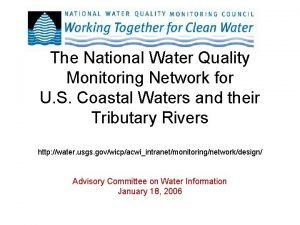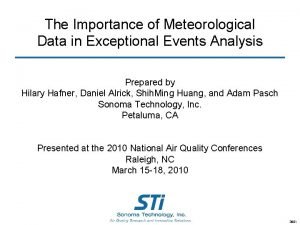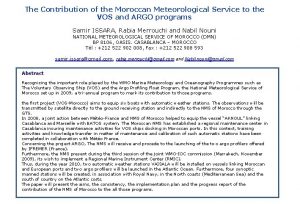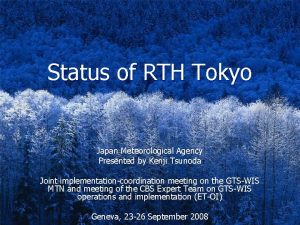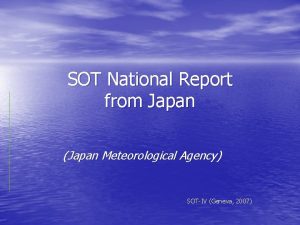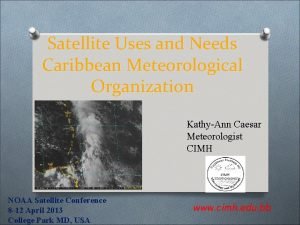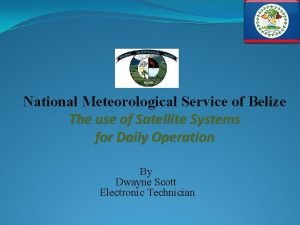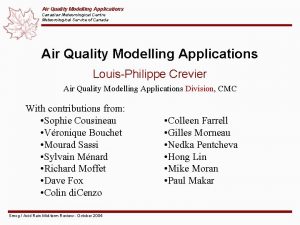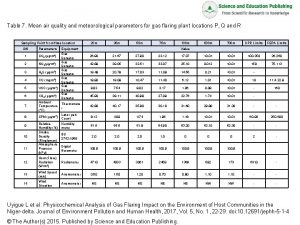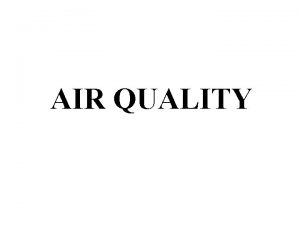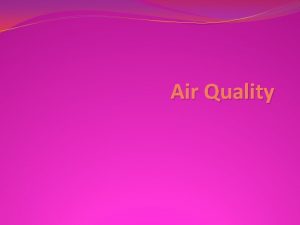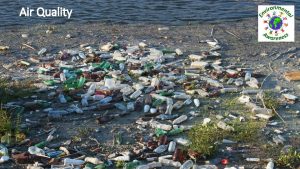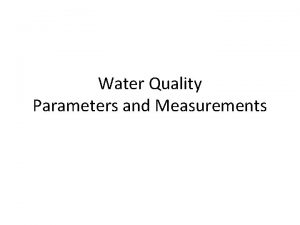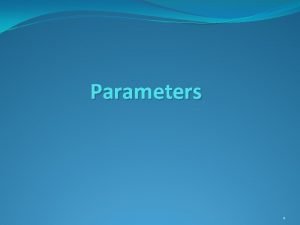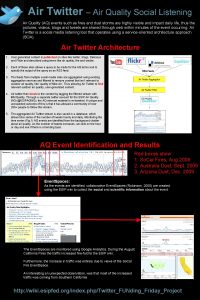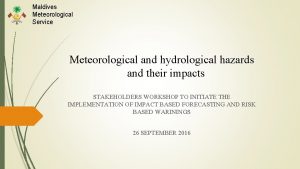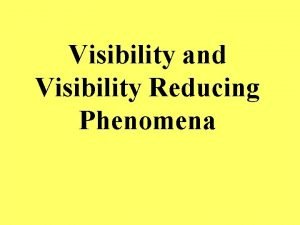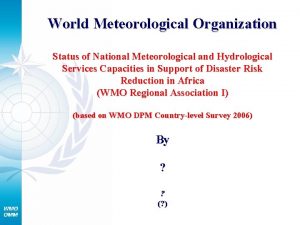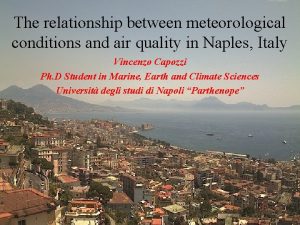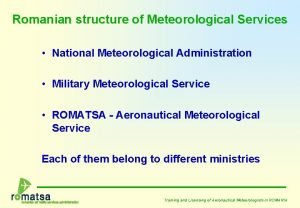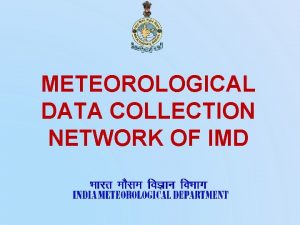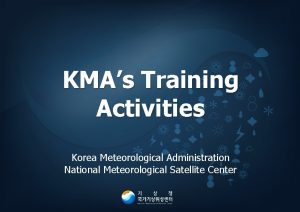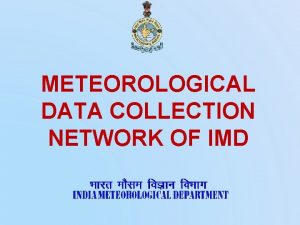Air quality monitoring Air and meteorological monitoring parameters






























- Slides: 30

Air quality monitoring Air and meteorological monitoring parameters Environmental monitoring

Air quality monitoring Classification of air pollutants • Primary pollutants (emitted directly to the atmosphere) • Secondary pollutants (formed by reactions involving primary pollutants and other constituents within the atmosphere) Classification of sources of air pollutants • Stationary sources • Mobile sources Sources • Natural sources • Anthropogenic sources • Urban sources Environmental monitoring

Air quality monitoring Primary air pollutants Secondary air pollutants are formed from sunlight that results in photochemical reactions of O 2 with one or more of the primary air pollutants. Environmental monitoring

Air quality monitoring Legislation regarding the concentration limits Order no. 592/2002 revized by Order 448/2007 for establishing the limit values and the evaluation methods of several primary pollutants in the environmental air (imisii) Pollutant Hourly limit value (average 1 h) Daily limit value (average 24 h) Annually limit value for human health protection (average 1 year) Annually limit value for vegetation protection (average 1 year) SO 2 350 μg/m 3 125 μg/m 3 - 20 μg/m 3 NO+NO 2 200 μg/m 3 - 40 μg/m 3 30 μg/m 3 Particulate Matter (PM 10) - 50 μg/m 3 20 μg/m 3 - Lead - - 0. 5 μg/m 3 - Benzene - - 5 μg/m 3 - CO - 10 mg/m 3 - - Ozone 120 μg/m 3 - 18. 000 μg/m 3 h - Arsenic* - - 6 μg/m 3 - Cadmium* - - 5 μg/m 3 - Nickel* - - 20 μg/m 3 - *Added by Order 448/2007 Environmental monitoring

Air quality monitoring Legislation regarding the concentration limits Order no. 592/2002 for establishing the limit values and the evaluation methods of several primary pollutants in the environmental air (imisii) Reference methods for concentration measurement SO 2 Fluorescence in ultraviolet NO+NO 2 Chemiluminescence Particulate Matter (PM 10) Collection of PM 10 on filters and mass measurement (gravimetric) or TEOM method Lead Collection of lead on filters and AAS Benzene Aspiration on a filter cartridge and gas chromatography CO Nondispersive infrared spectrophotometry (NDIR) Ozone UV photometry Environmental monitoring

Air quality monitoring National Network for Air Quality Monitoring (RNMCA) www. calitateaer. ro

Air quality monitoring Romanian legislation regarding the concentration limits Order no. 462/1993 regarding emissions from stationary sources (emisii) Refers to emissions produced by • Stationary sources • Vehicles • Infrastructures designed to transportation • Burning installations • Fuel burning Measurements are mandatory for the installation owner. The results are to be registered and archived by the owner. The limits are given according to the source. If the limits are exceeded, the polluter pays. Environmental monitoring

Air quality monitoring Order no. 462/1993 Burner supplied with liquid fuel Thermal power [k. W/t] Pollutant Unit < 100 - 300 - 500 > 500 Suspended particulates mg/Nm 3 50 50 CO mg/Nm 3 170 170 SOx (expressed in SO 2) mg/Nm 3 1700 NOx (expressed in NO 2) mg/Nm 3 450 450 Burner supplied with solid fuel Thermal power [k. W/t] Pollutant Unit < 100 - 300 - 500 > 500 Suspended particulates mg/Nm 3 100 100 CO mg/Nm 3 250 250 SOx (expressed in SO 2) mg/Nm 3 2000 400 NOx (expressed in NO 2) mg/Nm 3 500 400 400 Environmental monitoring

Air quality monitoring Order no. 462/1993 Burner supplied with natural gas Thermal power [k. W/t] Pollutant Unit < 100 - 300 - 500 > 500 Suspended particulates mg/Nm 3 5 5 CO mg/Nm 3 100 100 SOx (expressed in SO 2) mg/Nm 3 35 35 NOx (expressed in NO 2) mg/Nm 3 350 350 Environmental monitoring

Air quality monitoring Methods and instrumentation • Passive sampling methods • Active sampling methods • Automatic methods • Remote optical - long path analyzers Any instrument measures 3 types of values: • Instantaneous value • TWA (Time Weighted Average) • STEL (Short Term Exposure Limits) Environmental monitoring

Air quality monitoring Methods and instrumentation Gas measurement using spectroscopic methods Spectrophotometry is based on the interaction of the gas molecules with light. Absorbtion techniques – it is measured the intensity of light after passing through a gaseous medium. Usually absorption is measured at several frequencies in order to avoid offests and interferences with other species. There are 4 principles: • Differential Optical Absorption Spectroscopy (DOAS) • Fourier Transform Infrared (FTIR) • Non-Dispersive Infrared (NDIR) • Tunable Laser Diode Absorption Spectroscopy (TLDAS) Environmental monitoring

Air quality monitoring Methods and instrumentation Gas measurement using spectroscopic methods Emission techniques – excite molecules of the gas and then examine the light emitted as they return to their ground state. The signal is passed through a narrowband filter and measured with a photomultiplier tube. • Flame photometry • Chemiluminescence • UV fluorescence Environmental monitoring

Air quality monitoring Measurement of carbon monoxide (CO) by IR photometry Beer’s law A = log(I/Io) = ab. C I 0 A = absorbance a = absorbtion coefficient b = path length C = concentration I Environmental monitoring

Air quality monitoring Measurement of carbon monoxide (CO) Environmental monitoring

Air quality monitoring Measurement of carbon monoxide (CO) by IR photometry Environmental monitoring

Air quality monitoring Measurement of carbon monoxide (CO) by IR photometry Schematic of a NDIR head Environmental monitoring

Air quality monitoring Measurement of nitric oxides (NOx) by chemiluminescence Chemiluminescent reaction NO + O 3 ==> NO 2+ O 2 + hv (0. 6 – 3 μm) Environmental monitoring

Air quality monitoring Measurement of sulphur dioxide (SO 2) by UV fluorescence Excitation S 0 + hνex → S 1 Fluorescence (emission) S 1 → S 0 + hνem + heat Environmental monitoring

Air quality monitoring Measurement of sulphur dioxide (SO 2) by UV fluorescence Environmental monitoring

Air quality monitoring Measurement of sulphur dioxide (SO 2) by UV fluorescence Teledyne 100 E UV Fluorescence SO 2 Analyzer Ranges: 0 -50 ppb to 0 -20, 000 ppb full scale, user selectable or autoranging Units: ppb, ppm, µg/m 3, mg/m 3 Zero noise: < 0. 2 ppb (RMS) Span noise: < 0. 5% of reading (RMS) above 50 ppb Lower Detectable Limit (LDL): 0, 4 ppb Linearity: 1% of full scale Precision: 0. 5% of reading above 50 ppb Analog outputs: 10 V, 5 V, 1 V, 0. 1 V, selectable Serial outputs: Serial Port 1: RS-232 (DB-9 M) Serial Port 2: standard RS-232 or optional Environmental monitoring RS-485 (DB-9 F), Ethernet

Air quality monitoring Gas chromatography (video clip) Environmental monitoring

Air quality monitoring Measurement of Volatile Organic Compounds (VOC) Photo-Ionization Detector (PID) Environmental monitoring

Air quality monitoring Measurement of Volatile Organic Compounds (VOC) Photo-Ionization Detector (PID) Environmental monitoring

Air quality monitoring Measurement of suspended particles (particulate matter – PM) Fraction Size range PM 10 (thoracic fraction) ≤ 10 μm PM 2. 5 (respirable fraction) ≤ 2. 5 μm PM 2. 5 – PM 10 (coarse fraction) 2. 5 - 10 μm PM 1 (fine fraction) ≤ 1 μm Ultrafine (UFP or UP) ≤ 0. 1 μm Aerosol = particles + gas Environmental monitoring

Air quality monitoring Measurement of suspended particles (particulate matter – PM) Gravimteric method Environmental monitoring

Air quality monitoring Measurement of suspended particles (particulate matter – PM) Beta Attenuation Method Environmental monitoring

Air quality monitoring Measurement of suspended particles (particulate matter – PM) Beta Attenuation Method Model: BAM-1020 Enviro. Technology Technical specifications Source Carbon-14 (C-14), < 3. 7 MBq Measurement Range 0 to 1. 0, 2. 0, 3. 0, 5. 0, 10. 0 mg/m 3 0 to 100, 1, 000, 2, 000, 3, 000, 5, 000, 10, 000 μg/m 3 Minimum Detection Limit 6 μg/m 3 (1/2 hour), 4 μg/m 3 (1 hour) 3 μg/m 3 (3 hour), 1 μg/m 3 (24 -hour) Resolution 0. 1 μg/m 3 Precision ± 2. 0 μg/m 3 < 80 μg/m 3, 4 -5 μg/m 3 > 80 μg/m 3 (24 -hour average) Accuracy (for mass measurement) ± 5% using NIST-traceable mass foil set Environmental monitoring

Air quality monitoring Measurement of suspended particles (particulate matter – PM) Optical method Environmental monitoring

Air quality monitoring Measurement of suspended particles (particulate matter – PM) Tapered Element Oscillating Microbalance (TEOM) Environmental monitoring

Air quality monitoring Measurement of gaseous pollutants using electrochemical sensors O 2 Sn. O 2 -x O 2 Gaz O 2 Sn. O 2 -x R = resistance E e. V în aer A, α = constants C = gas concentration Metallic oxide e. V E în prezenţa gazelor de reducere Detected gases Ti. O 2, Fe 2 O 3, Co. O, Zn. O, Zr. O 2, Sn. O 2, La 2 O 3 O 2 Cr 2 O 3, Ni. O, Zn. O, Zr. O 2, Sn. O 2, In 2 O 3 CO Fe 2 O 3, Fe 3 O 4, Co 3 O 4, Zn. O CH 4 Sn. O 2, VO NOx Zn. O, Al 2 O 3, Sn. O 2 halogens Environmental monitoring
 Air higroskopis air kapiler dan air gravitasi
Air higroskopis air kapiler dan air gravitasi Quality control and quality assurance
Quality control and quality assurance Concepts of quality control
Concepts of quality control National meteorological and hydrological services
National meteorological and hydrological services Vietnam meteorological and hydrological administration
Vietnam meteorological and hydrological administration Croatian meteorological and hydrological service
Croatian meteorological and hydrological service Antigua met office
Antigua met office Pmp quality management
Pmp quality management Quality metrics pmp
Quality metrics pmp Define quality assurance in nursing
Define quality assurance in nursing Quality improvement vs quality assurance
Quality improvement vs quality assurance Gurus of tqm
Gurus of tqm Crosby quality is free
Crosby quality is free Old quality vs new quality
Old quality vs new quality Quality monitoring scorecard
Quality monitoring scorecard Quality monitoring scorecard
Quality monitoring scorecard National water quality monitoring conference
National water quality monitoring conference National water quality monitoring council
National water quality monitoring council Dqmf
Dqmf Wigos data quality monitoring system
Wigos data quality monitoring system Real time data quality monitoring
Real time data quality monitoring Permanent power quality monitoring equipment
Permanent power quality monitoring equipment Nwqmc
Nwqmc National water quality monitoring conference
National water quality monitoring conference What letters designate an air mass from the gulf of mexico?
What letters designate an air mass from the gulf of mexico? Importance of meteorological data
Importance of meteorological data Morocco meteorological service
Morocco meteorological service Tokyo meteorological agency
Tokyo meteorological agency Japan meteorological agency
Japan meteorological agency Ramsdis
Ramsdis Belize meteorological service
Belize meteorological service



